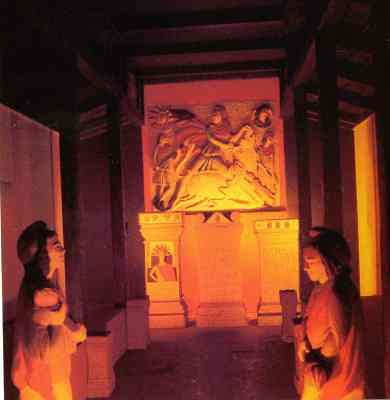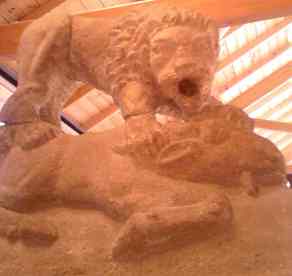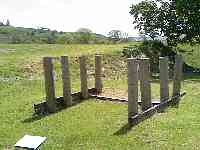1. Brittany does mist. Brittany does mist really, really well.
You’ve been in bright sunshine, then suddenly you notice the tendrills creeping over the hill, through the menhirs (Neolithic standing stones) and then you are enveloped. Kind of fun and mysterious, unless you are miles from town, exploring said menhirs, with the “aid” of the rather inaccurate tourist office map. Still, it was interesting trip home, past the amazing tumulus St Michael, which really is pyramid-like in its sheer bulk. Neolithic of course, but subsequently usurped by the Caholic church with a chapel on the top.
2. As that suggests, Britanny, or at least this area of it, around Carnac (pronounced as the Egyptian temple centre) has an astonishing concentration of massive Neolithic stone monuments. They’re casualy scattered over the landscape, as informally as trees. There’s one by the camp site entrance, and look,a dolmen by the carpark.*
3 Traditionally Britanny galettes (pancakes) are made from buckwheat flour (ble noir). Yippee Since I’m trying to eat gluten (though not being very good this week – who can resist nice crusty bread with their oysters?), when I realised this (frok reading a useful ‘recipe’ postcard) I could stop turning my back on all those tempting creperies – at least the more traditional ones. And buckwheat pancakes, as I already knew, are delicious.
4. Breton cider – which can be very nice indeed, is traditionally drunk from a cup, not a glass.- a very bulbous, broad cup. not sure why, but perhaps a function of the traditional poverty of the area, since glasses were probably expensive.
5. There are far too many Britons in Brittany. Yes I said Britons, not Bretagnes. I gather it is because of easy ferry crossings, but there seem to be a lot of the yell-louder-and-the-waitress-will understand-English school here, being very obnoxious and doing things like demanding spag bol for dinner. In France! And the British children seem far less controlled than the French. I don’t know why …
To be continued. I’ve written the second half, but PDA web browser and WordPress are not good friends….




 About
About